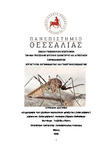| dc.description.abstract | BACKGROUND: The insecticidal efficacy of selected mosquito larvicides [teflubenzuron, S-methoprene, diflubenzuron, temephos, Bacillus thuringiensis var. israelensis (Bti) and polydimethylsiloxane (PDMS)], applied alone or in combination, against two Culex pipiens biotypes, Cx. p. pipiens and Cx. p. molestus, was compared under laboratory and semi-field conditions. Registered larvicides were evaluated at the label dose, whereas those not registered for mosquito control were tested at the label dose per area, i.e. as plant protection products. Teflubenzuron and temephos were also evaluated at half the label dose, alone or in combination with a non-ionic surfactant. Larval mortality and adult emergence were assessed after 1, 3, 5, 7, 9, 11, 16 and 20 days of exposure. RESULTS: In all cases, PDMS showed complete (100%) larval control after 3 days of exposure against both biotypes. With temephos, all larvae were dead after 1 day of exposure, even at half the label dose. For teflubenzuron, mortality reached 100% at the end of the bioassays and adult emergence was avoided completely, whereas for diflubenzuron, mortality was close to 100% at the end of the trials. By contrast, in S-methoprene-treated water, control was below the 90% mortality threshold for both biotypes. In semi-field trails, in all treatments with Bti, all larvae of both biotypes were dead after 1 day of exposure. CONCLUSIONS: Based on our data, and with the exception of S-methoprene, the larvicides tested remained below the threshold for effective treatment against larvae of Cx. p. pipiens and Cx. p. molestus for the entire duration of the study. Most of the larvicides tested showed high levels of efficacy against Cx. p. pipiens and Cx. p. molestus larvae in laboratory and semi-field bioassays. © 2020 Society of Chemical Industry. © 2020 Society of Chemical Industry | en |



